Your wearable devices lose Bluetooth connection due to several key factors. Low battery levels weaken radio signals and trigger power-saving modes that reduce Bluetooth activity. Aggressive power management settings automatically shut down Bluetooth adapters during inactivity periods. Physical obstacles like walls and metal objects block signals, while interference from other 2.4 GHz devices creates connectivity disruptions. Software updates can introduce compatibility issues, and mismatched Bluetooth profiles cause unstable connections. Understanding these causes helps you implement targeted solutions.
How Low Battery Levels Disrupt Bluetooth Connectivity in Wearables
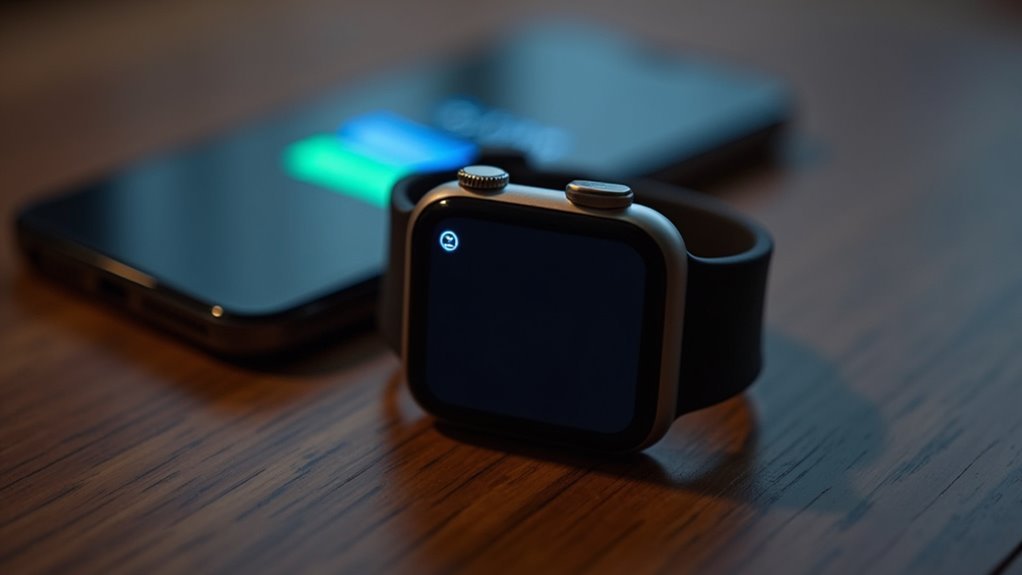
When your wearable device’s battery starts running low, it can’t supply enough power to maintain strong Bluetooth connectivity with your phone or other paired devices. The weakened radio signal increases your chances of experiencing dropped connections and intermittent pairing issues.
As your battery drains, your BLE wearable enters power-saving modes that reduce Bluetooth activity to preserve remaining charge. This creates a frustrating cycle where your device drops connections to conserve energy, but reconnecting requires even more power that’s already scarce.
You’ll notice increased latency and slower reconnection times as battery levels decrease. Signal interference becomes more problematic when your battery’s low, making connections unstable. The limited range of BLE technology, which extends up to 200 meters in ideal conditions, becomes even more restricted when battery levels drop.
Your device’s firmware may also malfunction under battery stress, further disrupting Bluetooth performance until you recharge.
Understanding Bluetooth Range Limitations and Physical Barriers
You’ll find that your wearable’s Bluetooth connection weakens considerably beyond 30-50 meters, even in ideal conditions.
Physical obstacles like walls, furniture, and metal objects create barriers that block or reduce signal strength between your device and smartphone. Modern Bluetooth technology uses adaptive frequency hopping to dynamically track and avoid congested channels, which helps maintain more reliable connections despite interference.
Understanding these range boundaries and obstruction effects helps you identify why your connection drops unexpectedly during daily activities.
Effective Range Boundaries
Three key factors determine your wearable’s Bluetooth connection range: the technology standard it uses, the physical environment you’re operating in, and the hardware limitations built into the device itself.
Most wearables use BLE technology, which typically provides 30-50 meters of effective range under ideal conditions. However, you’ll rarely achieve these maximum distances in real-world scenarios.
Indoors, walls and furniture reduce your range to 10-30 meters, while outdoor open areas allow longer connections.
Your device’s compact design limits antenna quality, and manufacturers often restrict range to preserve battery life. Advanced energy-saving chipsets like Qualcomm Snapdragon Wear 2100 help optimize both connection stability and power consumption in modern wearables.
BLE 5.0 can theoretically reach 400-1000 meters using Long Range mode, but wearables prioritize power efficiency over distance, keeping you within practical boundaries for everyday use.
Physical Obstruction Effects
Physical barriers between your wearable and connected device create the most immediate and noticeable impact on connection quality.
Concrete and brick walls greatly weaken signals, dropping strength to -71 dBm with 81% quality retention. Metal objects like filing cabinets or refrigerators can completely block transmissions due to their radio wave absorption properties. Your body and water containers also interfere by absorbing signals.
Reinforced concrete and iron structures pose the greatest challenges, while plasterboard and wood cause minimal disruption, maintaining -64 dBm strength with 84% quality.
These obstructions don’t just weaken signals—they cause connection drops, audio skipping, and pairing difficulties. You’ll notice reduced effective range and frequent disconnections when obstacles interrupt the signal path between your devices. Environmental factors like humidity can further degrade signal quality and compound these connection issues.
The Impact of 2.4 GHz Frequency Interference on Wearable Connections
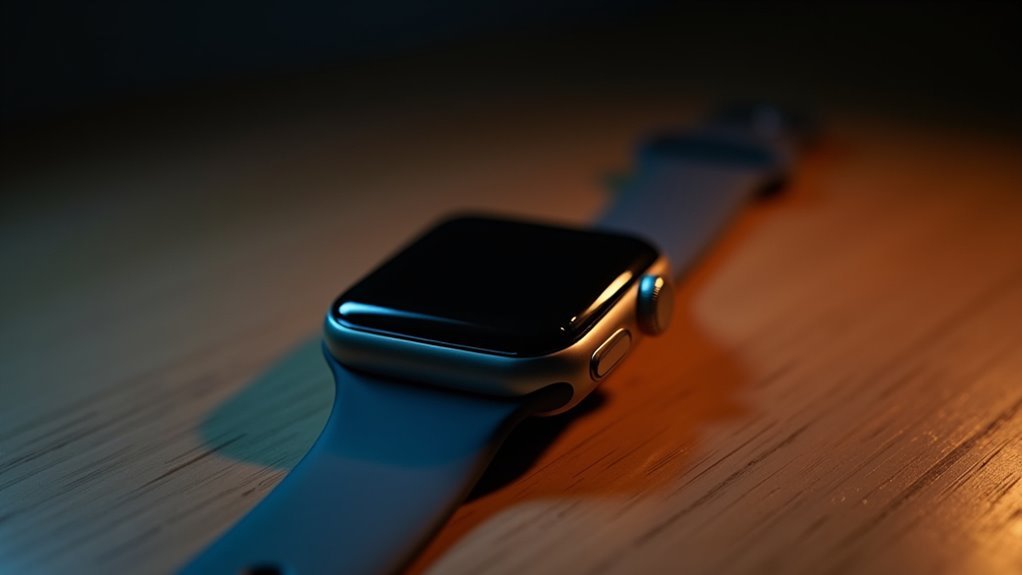
Interference becomes a significant challenge when your wearable device operates in the crowded 2.4 GHz frequency band, where numerous household electronics compete for the same electromagnetic spectrum.
Your cordless phones, microwave ovens, smart TVs, and wireless security cameras all contribute to this congestion, creating unpredictable interference patterns that disrupt your device’s connectivity.
Common household electronics like cordless phones, microwaves, and smart TVs create interference patterns that disrupt your wearable device’s wireless connectivity.
This interference directly impacts your wearable’s performance through frequent connection drops, weakened signal strength, and increased latency in data transmission.
You’ll notice your device’s battery draining faster due to constant reconnection attempts, and you may experience critical data loss during interrupted connections.
Bluetooth devices employ frequency-hopping technology that switches between 79 available channels 1600 times per second to minimize interference disruption.
You can mitigate these issues by positioning devices at least 4-5 feet apart, switching other electronics to the 5 GHz band, and choosing wearables with advanced frequency hopping capabilities that rapidly switch between available channels.
Software Updates and Firmware Bugs That Cause Connection Drops
While software updates promise enhanced functionality and bug fixes, they frequently introduce unexpected compatibility issues that disrupt your wearable’s Bluetooth connections.
Updates can change Bluetooth protocols, affecting how your devices communicate and potentially causing disconnections. You’ll also find that some updates reset your device settings, inadvertently disabling Bluetooth or changing connection preferences.
Firmware bugs create additional problems through hardware incompatibility and increased resource consumption.
Your device becomes more sensitive to interference from Wi-Fi routers, while data transmission errors result in lost packets. Clock skew problems cause timing issues, and power management bugs lead to unstable connections through power fluctuations. Additionally, interference from other electronic devices in your environment can cause unexpected disconnections even when software appears to be functioning normally.
Fortunately, updates can resolve these issues by fixing known bugs, improving compatibility, optimizing resource usage, and introducing better error handling mechanisms for stable connections.
Common Bluetooth Pairing Mistakes That Lead to Unstable Connections
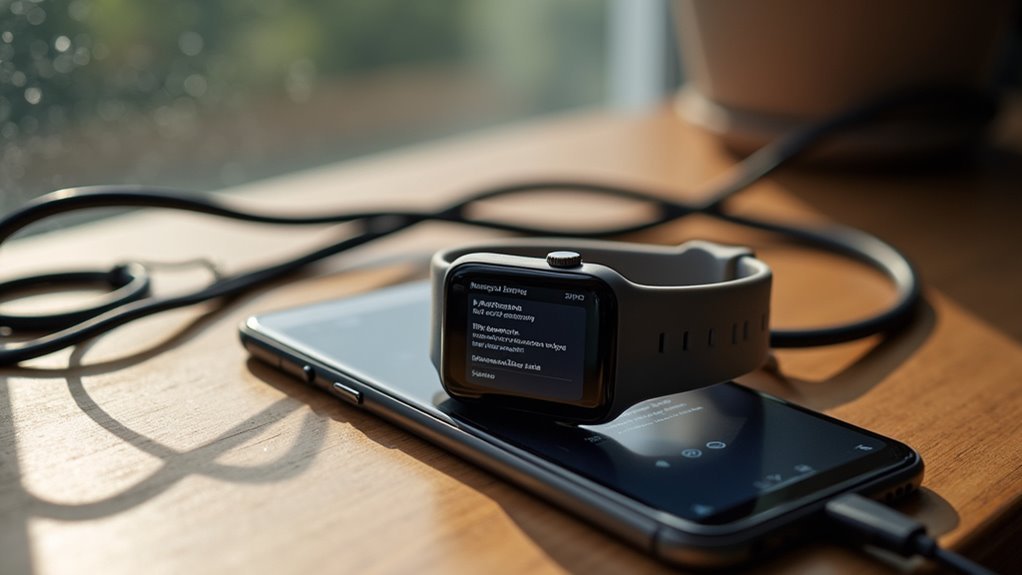
You might think pairing your wearable device is straightforward, but rushing through the process or skipping steps often creates connection problems that’ll plague you later.
When you’ve got multiple Bluetooth devices competing for your phone’s attention, conflicts arise that cause your smartwatch or fitness tracker to disconnect unexpectedly.
Your devices also need to speak the same Bluetooth “language” through compatible profiles, and mismatches here result in connections that work partially or drop frequently. Additionally, when your wearable moves beyond the close proximity range required for stable communication, the connection inevitably weakens and drops.
Incomplete Pairing Process
When establishing a Bluetooth connection between your wearable device and smartphone, the pairing process requires precise execution of multiple technical steps that many users inadvertently skip or perform incorrectly.
| Issue Type | Common Problem | Impact |
|---|---|---|
| Initialization | Incorrect device startup sequence | Connection failure |
| Feature Exchange | Incomplete capability negotiation | Unstable pairing |
| Encryption | Key generation failure | Security gaps |
| User Actions | Skipped confirmation steps | Partial connection |
| Compatibility | Mismatched profiles | Function limitations |
You’ll encounter initiation errors when devices don’t properly communicate their capabilities during the initial handshake. Feature exchange issues occur when your devices can’t accurately share their supported functions. Encryption key failures create unstable connections that drop frequently. Without completing all required steps, your pairing remains incomplete, causing persistent disconnection problems that frustrate daily usage.
Modern NFC technology can eliminate many of these pairing complications by allowing devices to establish connections simply by bringing them close together, avoiding the traditional multi-step Bluetooth setup process entirely.
Multiple Device Conflicts
Bluetooth networks become unstable when too many devices compete for the same 2.4 GHz frequency space. Your wearable struggles to maintain connections when smartphones, laptops, tablets, and other peripherals crowd the wireless environment.
This congestion creates packet loss, forces retransmissions, and triggers intermittent disconnections that’ll frustrate your daily routine.
Managing multiple connections simultaneously overwhelms your device’s firmware, especially when poor implementation causes scheduling conflicts. When several devices attempt pairing or reconnection at once, collisions occur that disrupt the entire network. Wi-Fi networks operating on the same frequency band add another layer of interference that can destabilize your wearable’s connection.
Physical obstructions worsen these problems by blocking signal paths between competing devices.
- Your fitness tracker drops mid-workout, losing precious heart rate data
- Important calls disconnect when smartwatch conflicts with phone
- Music stutters constantly during commutes with multiple devices nearby
- Work presentations fail when laptop and wearable fight for bandwidth
Profile Compatibility Issues
Although modern wearables support multiple Bluetooth profiles, mismatched profile compatibility creates the silent killer of stable connections. When your fitness tracker uses Health Device Profile (HDP) but your phone doesn’t fully support it, you’ll experience frequent disconnections and data transfer failures.
Bluetooth version incompatibility compounds these issues. Your newer device running Bluetooth 4.2 might struggle to maintain stable connections with older 4.0 devices due to different security protocols and encryption methods.
Manufacturer limitations worsen this problem—some brands don’t implement all necessary profiles or security features. With 60% of developers reporting cross-device communication issues, these compatibility challenges significantly impact connection reliability.
You can fix these issues by ensuring both devices support identical profiles and keeping firmware updated. Check your device specifications for profile compatibility before pairing, and prioritize devices with LE Secure Connections support for enhanced stability.
Hardware Quality Issues in Budget and Aging Wearable Devices
The price point of your wearable device often determines the quality of its internal components, directly affecting Bluetooth performance and reliability. Budget devices typically use inferior Bluetooth chipsets and poorly designed antennas that create weak signal strength and frequent disconnections.
As your device ages, component degradation becomes inevitable, with batteries losing their ability to maintain consistent power and hardware experiencing wear that compromises connectivity. With billions of devices relying on Bluetooth technology daily, even small hardware defects can significantly impact your user experience.
Unfortunately, both scenarios leave you vulnerable to:
- Sudden connection drops during important calls or workouts
- Frustrating audio delays that ruin your music and video experience
- Missed notifications from critical apps and messages
- Inconsistent performance that makes your device unreliable when you need it most
These hardware limitations often can’t be fixed through software updates alone.
Why Crowded Environments Cause Bluetooth Signal Degradation
When you step into a bustling airport terminal or crowded office space, your wearable device’s Bluetooth connection faces an invisible battle for wireless spectrum.
Bluetooth operates on the congested 2.4 GHz band, competing with Wi-Fi routers, wireless keyboards, and countless other devices for bandwidth. This frequency overlap creates interference that destabilizes your connection.
Your Bluetooth device battles dozens of wireless signals on the same crowded frequency, creating inevitable interference that weakens connectivity.
Physical obstacles worsen the situation. Walls, metal surfaces, and even crowds themselves absorb or scatter signals, reducing Bluetooth’s already limited range from 30 meters to just a few meters. Low battery levels on your wearable can further compound connection issues, resulting in dropped calls and poor audio quality.
Meanwhile, device density overwhelms Bluetooth’s adaptive frequency hopping mechanism. Microwave ovens, electronic signage, and fluorescent lighting add additional interference layers.
In these environments, your wearable struggles against a perfect storm of signal disruption.
How Power Management Settings Affect Bluetooth Stability
Your device’s power management settings can silently sabotage your Bluetooth connections without you realizing it.
When you enable aggressive battery optimization settings, your system might automatically shut down Bluetooth adapters during periods of inactivity, causing your wearables to disconnect unexpectedly. Microsoft actually removed power management options in Windows 10 build 2004 and later versions due to these connectivity problems.
These low power disconnections often happen at the worst times, forcing you to manually reconnect your devices and disrupting your workflow.
Battery Optimization Settings
Although power management settings help conserve battery life, they often create the very Bluetooth connection issues you’re experiencing with wearable devices.
Your operating system’s aggressive battery optimization can suspend Bluetooth processes in the background, breaking connections when you need them most. Mobile devices and laptops automatically reduce Bluetooth radio activity during power-saving modes, causing frustrating disconnections.
These settings frequently conflict with Bluetooth Low Energy’s need for precise timing during periodic wake-ups. When your system interrupts these critical communication windows, you’ll lose connection reliability. Modern wearables rely on BLE 5.2 features that enhance connection reliability, but aggressive power management can override these improvements.
- Your fitness tracker disconnects mid-workout, losing precious exercise data
- Important health notifications never reach your phone during emergencies
- Constant reconnection attempts drain both device batteries faster
- Professional presentations fail when your wireless presenter remote disconnects
Low Power Disconnections
Disabling this setting prevents unexpected shutdowns and maintains stable connections.
However, Windows 10 build 2004 removed official power management controls, though they’re restored in Windows 11.
Your wearable’s firmware also plays a role—optimized devices manage Bluetooth states dynamically, reducing power consumption during idle periods while maintaining connection stability through minimal keep-alive pulses. Modern wearables implement sophisticated wake-up triggers that activate the device from deep sleep modes when detecting vibrations or sudden movements, ensuring the Bluetooth radio remains responsive without draining the compact lithium-ion battery.
The Role of Bluetooth Version Compatibility in Connection Problems
When you’re struggling to connect your smartwatch or fitness tracker, the culprit might be a fundamental mismatch between Bluetooth versions on your devices.
Your newer smartphone running Bluetooth 5.0 mightn’t properly communicate with an older wearable stuck on Bluetooth 3.0, creating incompatible transmission protocols that prevent connections entirely.
Modern smartphones and legacy wearables often speak different Bluetooth languages, creating communication barriers that block successful device pairing.
Even when devices do connect, version mismatches force communication to fall back to the lowest common denominator.
You’ll experience reduced connection stability, slower data rates, and loss of advanced features like multipoint switching that you’ve come to expect. While Bluetooth technologies maintain backward compatibility across different versions, the available features remain limited to what the older device can support.
- Your expensive smartwatch becomes a glorified paperweight when it can’t talk to your phone
- Fitness data disappears into the void during failed sync attempts
- You miss important notifications because your wearable keeps disconnecting
- Years of health tracking progress feels wasted on incompatible technology
Environmental Factors That Weaken Wearable Bluetooth Signals
Beyond device compatibility issues, your wearable’s Bluetooth connection faces constant threats from the physical world around you. Concrete walls and metal structures drastically reduce signal strength by causing reflection and absorption.
Your body itself absorbs 2.4 GHz radio waves, weakening connections especially when you’re wearing the device on your wrist.
Environmental interference compounds these problems. Wi-Fi networks, microwave ovens, and cordless phones all compete for the same 2.4 GHz frequency band your Bluetooth uses. High humidity levels increase signal absorption, while dense electronic environments create frequency congestion that degrades performance. Line-of-sight positioning often provides the most stable connection by eliminating physical barriers between your wearable and paired device.
Signal reflections off glass and metal surfaces create multipath interference, causing timing errors and temporary disconnections. Your movement changes antenna alignment and reflection patterns, introducing instability that leads to those frustrating connection drops.
Device-Specific Settings That Automatically Disconnect Bluetooth
While environmental factors disrupt your wearable’s connection from the outside, hidden device settings often sabotage it from within.
Auto switch features on Samsung Galaxy Buds and smartwatches automatically shift connections between paired devices, creating unexpected disconnects when you’re not expecting them. Your phone’s auto connect toggles can prevent devices from reconnecting properly, leaving you frustrated when connections fail.
Companion apps like Galaxy Wearable control these behaviors through settings you might’ve never explored. Auto switch only works within a 6-foot range, limiting its effectiveness when you move between rooms or locations with your devices.
- Your smartwatch betrays you by automatically connecting to a different device without warning
- Hidden auto connect settings silently block your wearable from reconnecting when you need it most
- Companion apps override your phone’s Bluetooth settings, creating conflicting connection rules
- Stale Bluetooth profiles corrupt your connection history, causing unpredictable disconnects that seem random
Frequently Asked Questions
Can I Use Multiple Wearables Simultaneously With One Phone Without Connection Issues?
You can pair multiple wearables with one phone, but typically only one stays actively connected at a time. This prevents interference and conserves battery, though some Android devices handle multiple simultaneous connections better.
How Often Should I Restart My Wearable to Maintain Stable Bluetooth Connections?
You shouldn’t restart your wearable on a fixed schedule. Only restart when you’re experiencing connection issues, software glitches, or performance problems. Regular restarts aren’t necessary and may disrupt your user experience unnecessarily.
Do Weather Conditions Like Rain or Humidity Affect Wearable Bluetooth Performance?
Rain and humidity won’t directly disrupt your wearable’s Bluetooth signals, but they can affect your device’s overall performance and battery life, potentially causing indirect connectivity issues over time.
Will Using a Phone Case or Screen Protector Interfere With Bluetooth Connectivity?
You’ll experience interference if you’re using metal or thick cases, as they block radio waves. However, silicone, plastic, or rubber cases won’t affect connectivity. Screen protectors typically don’t interfere with Bluetooth signals.
Can Certain Medications or Medical Conditions Impact Wearable Device Bluetooth Signals?
Medications typically won’t directly affect your wearable’s Bluetooth signals. However, medical conditions causing swelling or requiring electromagnetic medical devices might create interference that impacts your device’s signal strength and connectivity.
In Summary
You’ll find that Bluetooth connection issues with your wearables stem from multiple factors working together. Whether it’s your device’s low battery, interference from other electronics, or outdated firmware, you can usually fix these problems with simple troubleshooting steps. Don’t forget to check your power settings, verify you’re within range, and keep your software updated. Most connection drops aren’t permanent—they’re just temporary hiccups you can resolve.

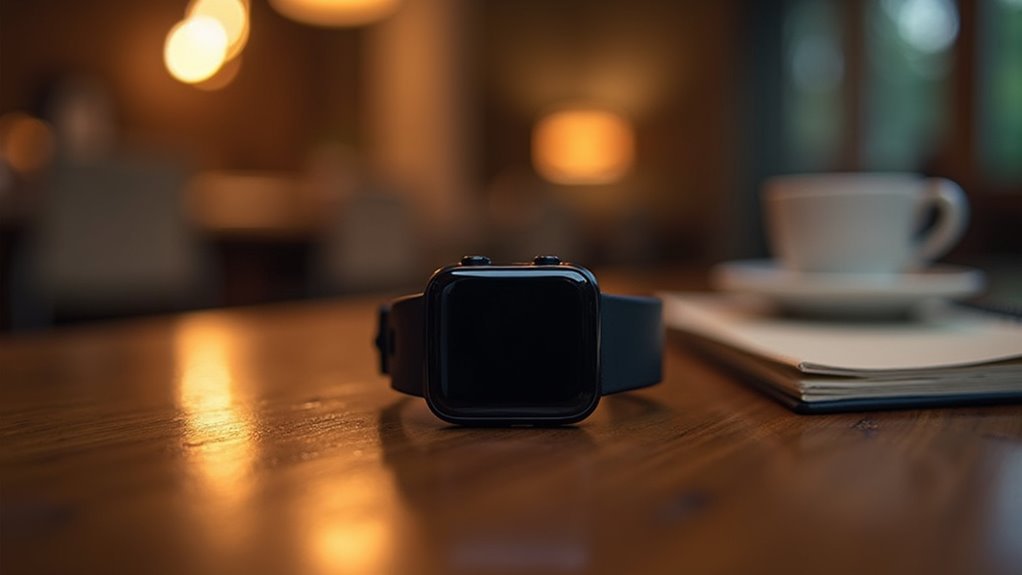
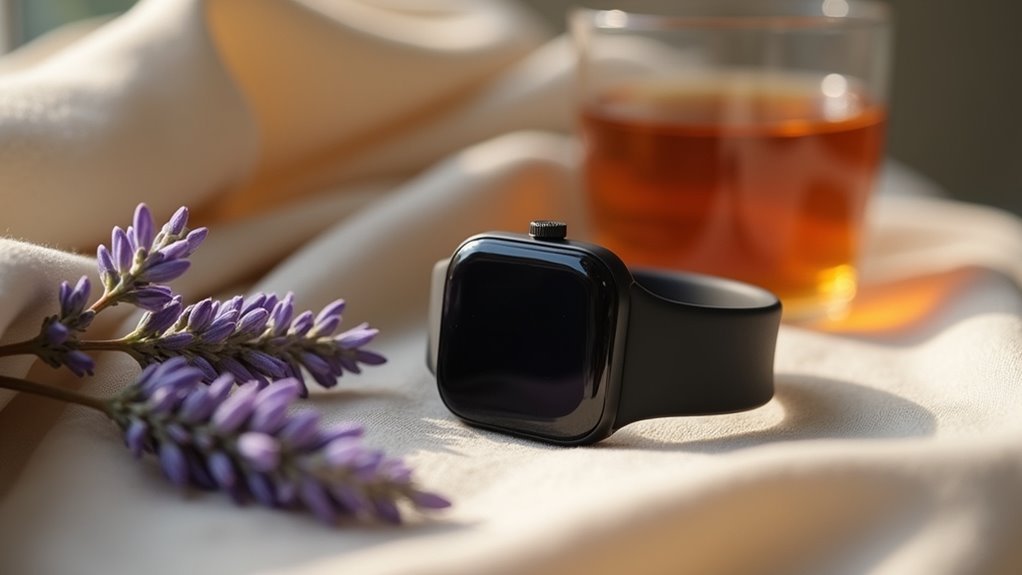
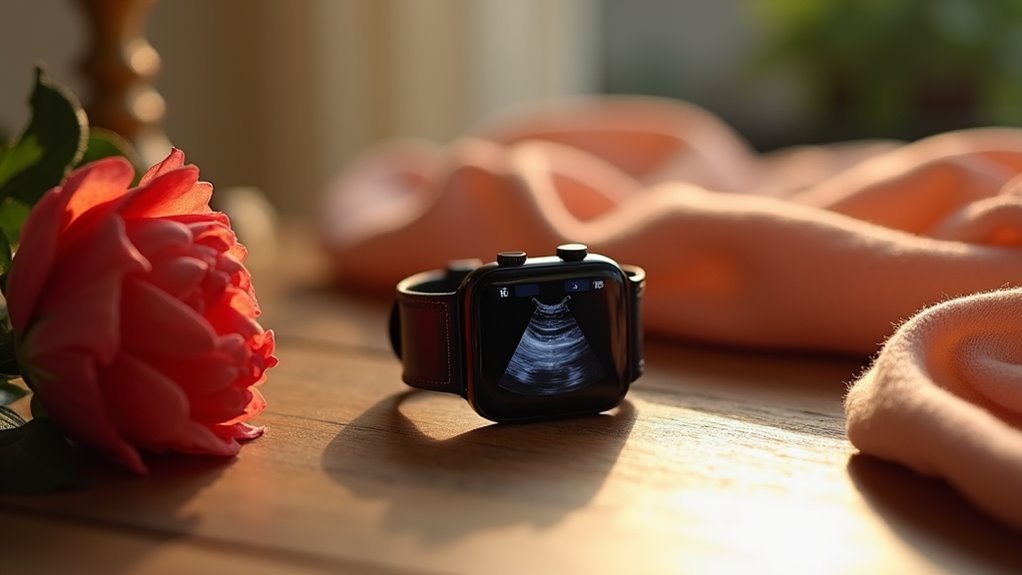
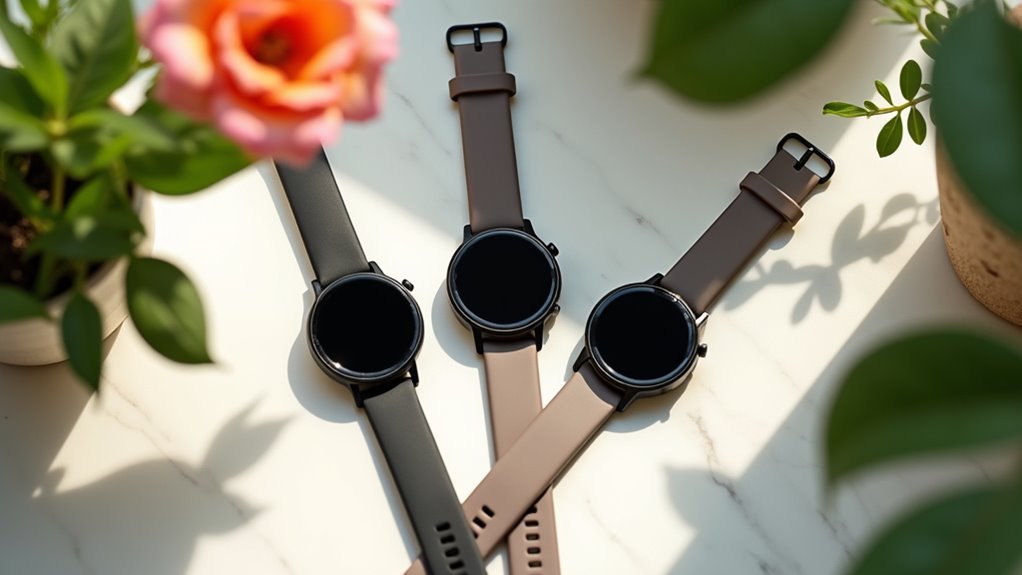
Leave a Reply